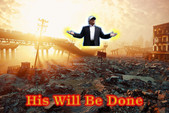Every now and then, an artist comes along who is so original, so defiant, that they break all conventions that came before and force us to invent a special new category just for them.
Comics existed before Rube Goldberg, but he alone invented the complicated machine gag. Thereafter every humorous complex contraption, be it in comics, cartoons, or even in film with Peewee Herman's "breakfast machine," is referred to as a Rube Goldberg machine.
Single-gag one-panel comic strips had appeared in every newspaper, but Gary Larson was the first to introduce high-brow nerdy humor in his ground-breaking strip The Far Side. Thereafter, every nerd humor comic which is aimed at an educated and mature audience, from Dilbert to XKCD, owes a debt to Gary Larson. (Oh yes, mine too. Perhaps somebody read it once.)
Horror manga existed before Junji Ito; we swear it really did! There was Kazuo Umezu, for one, whose first work was published just one year before Ito was born. It's just that nobody before Junji Ito has published manga that was so… weird. Manga before had dwelled on familiar tropes and topics: big stompy Kaiju, Yokai folklore, or moving to western influences, werewolves and vampires and whatnot.
But when Junji Ito sits down to write a story, he… wait a minute, this just takes some explaining.
How Does Junji Ito Work?
Ito is an artist who has a unique character aspect of creating stories from the most ridiculous premises imaginable. Examples: Gyo, The Hanging Balloons, and Uzumaki. If you remove enough context and detail, you could make a game out of playing "Junji Ito or Dr. Seuss?"
You could say "holes shaped like people appear in the side of an earthquake fault line" and that pretty much describes The Enigma of Amigara Fault.
The Enigma of Amigara Fault went viral after the English translation was posted around 2006. While you can take the story on a humorous level, many readers report being freaked way out by the idea of the premise. It's not just general but personalized.
The same idea of adding dread by personalized comes back in that The Hanging Balloons story.
Junji Ito gets you every time like this Layers of Fear.
The hook with Ito's work is that it latches onto the adult side and the kid side of you at the same time. As children, we have absurd fears like "what if a monster lives under my bed?". As adults, we master the world around us, but we never again fear of bogeymen. Ito grabs all that and ties it together in one sack.
There is next to no development for his characters. His plots almost vanish inside the premises. All that's left is the raw ideas, and his remarkable genius at starting from simple hooks and developing them into brain-freezing at their wonkiest possible conclusions.
Ito's Influences
We certainly can't do better than let the man speak for himself:
...albeit a labored interview, since a translator has to take notes and then read back to the Toronto audience. Ito has in the past named some influences for his work, starting with the previously-mentioned Kazuo Umezu, and other mangaka such as Hideshi Hino, Shinichi Koga, and Yasutaka Tsutsui.
But turning westward and wandering astray from manga, Ito has a couple of other obvious cultural influences which westerners are quick to pounce on.
He has openly acknowledged H.P. Lovecraft as an influence, and that's a connection that leaps right off the page. Your Present Author has established himself as a bit of a Lovecraft historian by now, and I can definitely spot the similarities between Lovecraft and Ito. Mainly, in both Lovecraft and Ito stories there is no villain, usually not even a monster in the traditional sense. Instead, it turns out we humans are just another puny species afterthought, and it's something in nature that comes to finish us off.
The stuff that grabs us for its originality is when nature, some aspect of ourselves, or even the universe itself is our natural enemy. Such is the case when people turn into their own gravestones, or people start to plant themselves in the ground like trees, or the very Lovecraftian title The Thing That Drifted Ashore, complete with a beach-side cosmic natural force that's all writhing tentacles and nightmares.
The next-most compared influence to Junji Ito is director David Cronenberg, himself a brilliantly original creator who invented the new genre. It's true that many of Ito's works rely on squicky things happening to human bodies, which get stretched, flayed, pulped, and even… uh… spiraled. One need only ponder that fact that Ito previously worked as a dental assistant to appreciate how staring into somebody's advanced tooth decay can warp a guy.
Outside of that, you could maybe name Franz Kafka as a distant influence on Ito, but here the connections already draw thin. Like Kafka, Ito's characters exist in a universe that casually toys with them or assassinates them with no pity, at whim and wile of the wind. Surrealism is pretty much necessary in cosmic to begin with.
It says something for how ground-breaking an artist is, when the closest comparisons to them are also ground-breaking artists! No matter the influences, Ito has taken the pulpy heart and the potential of manga comics and made it into a unique brew all his own. He's pushed so far into his unique niche rabbit hole that nobody else can follow him now. There will always be exactly one Junji Ito.




























